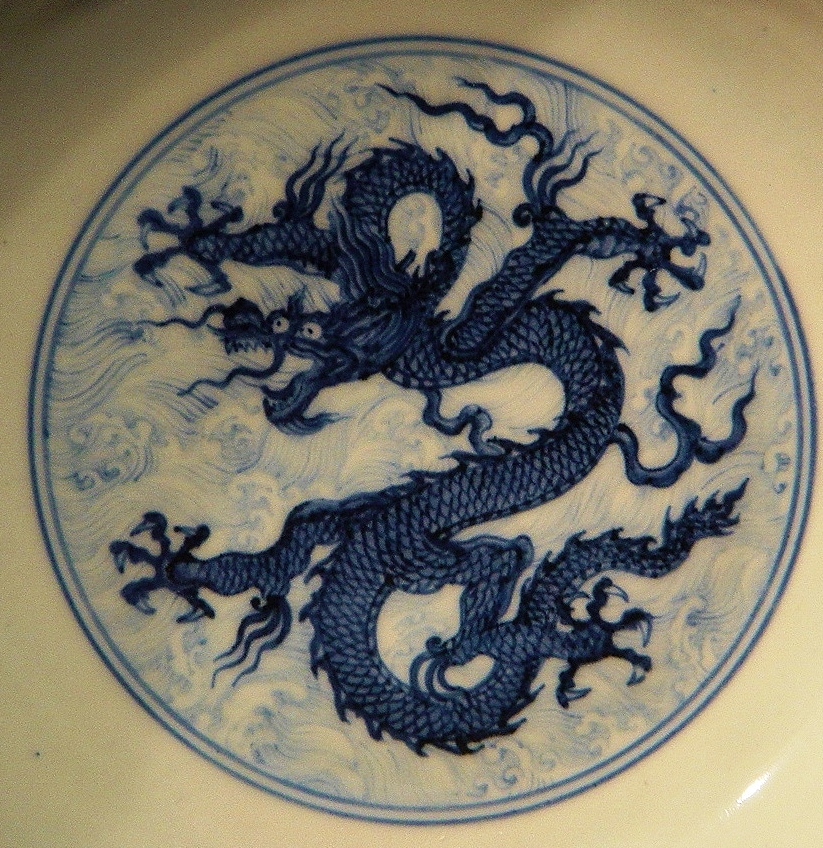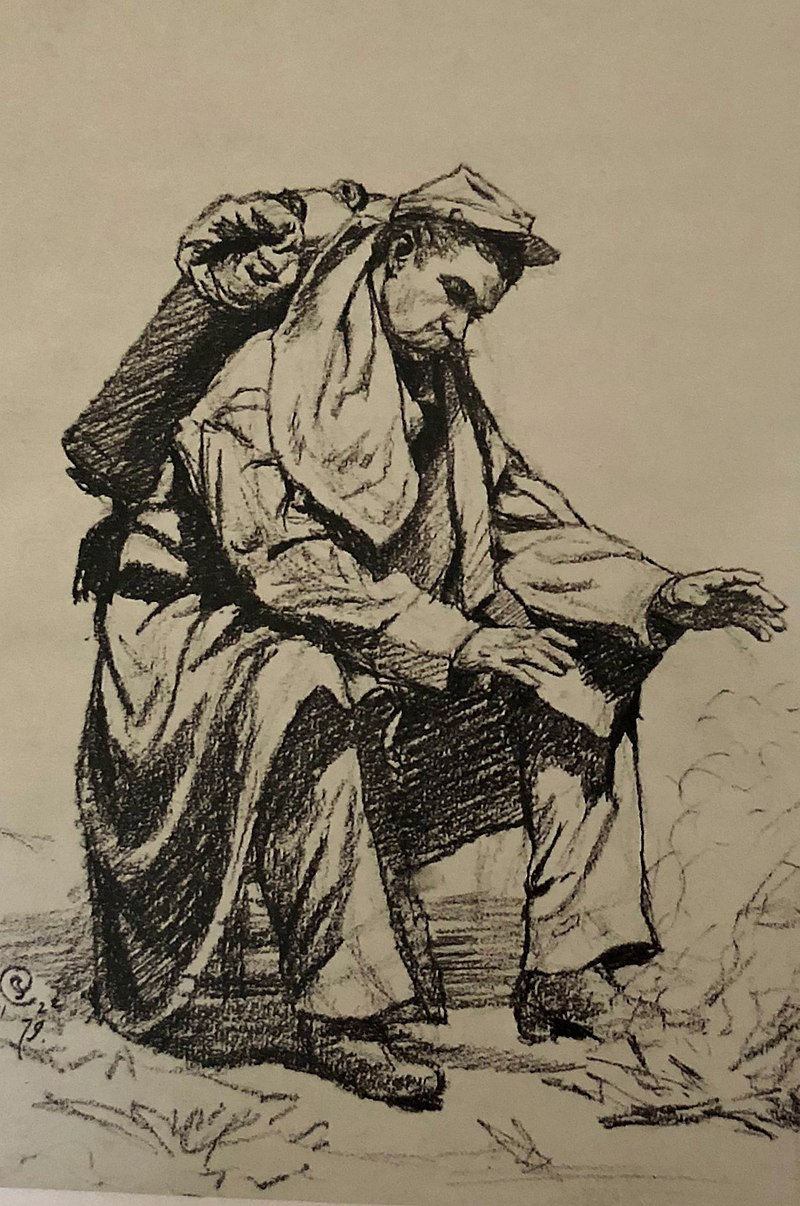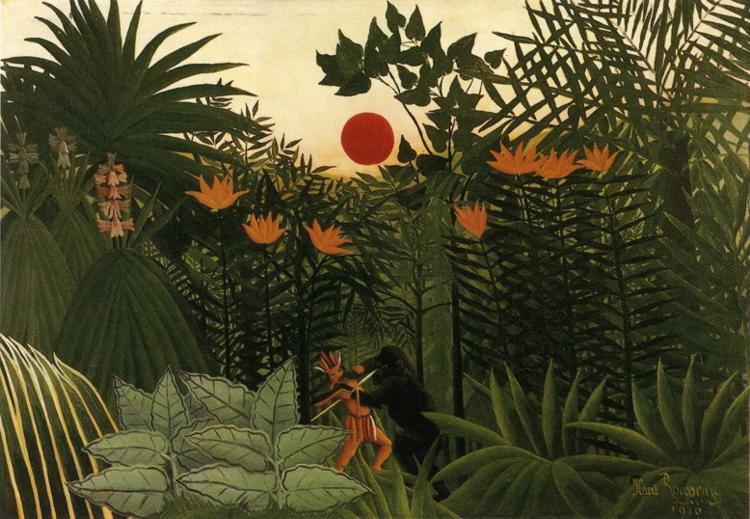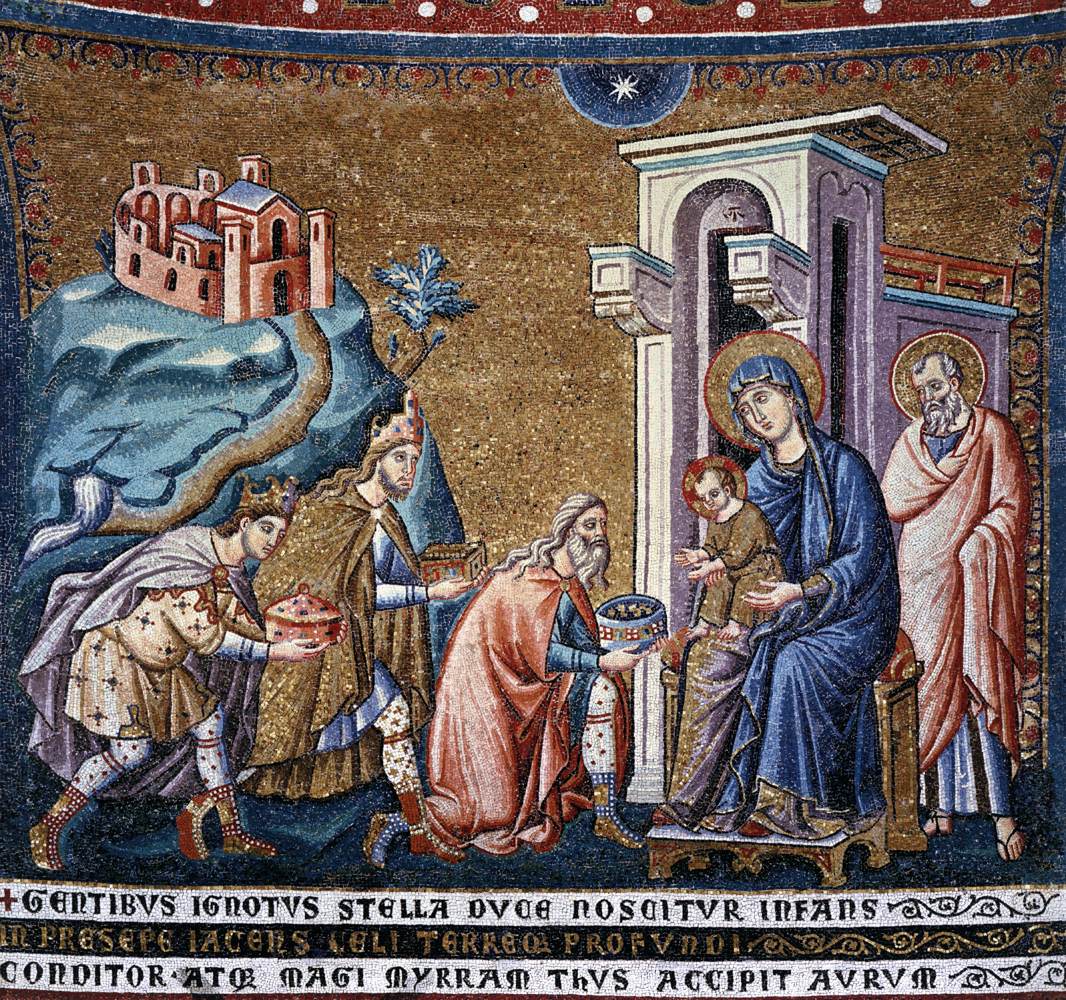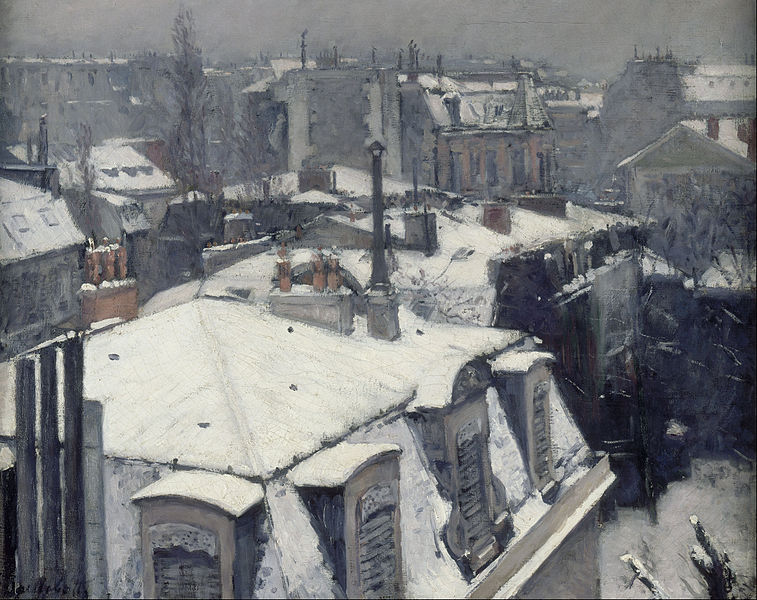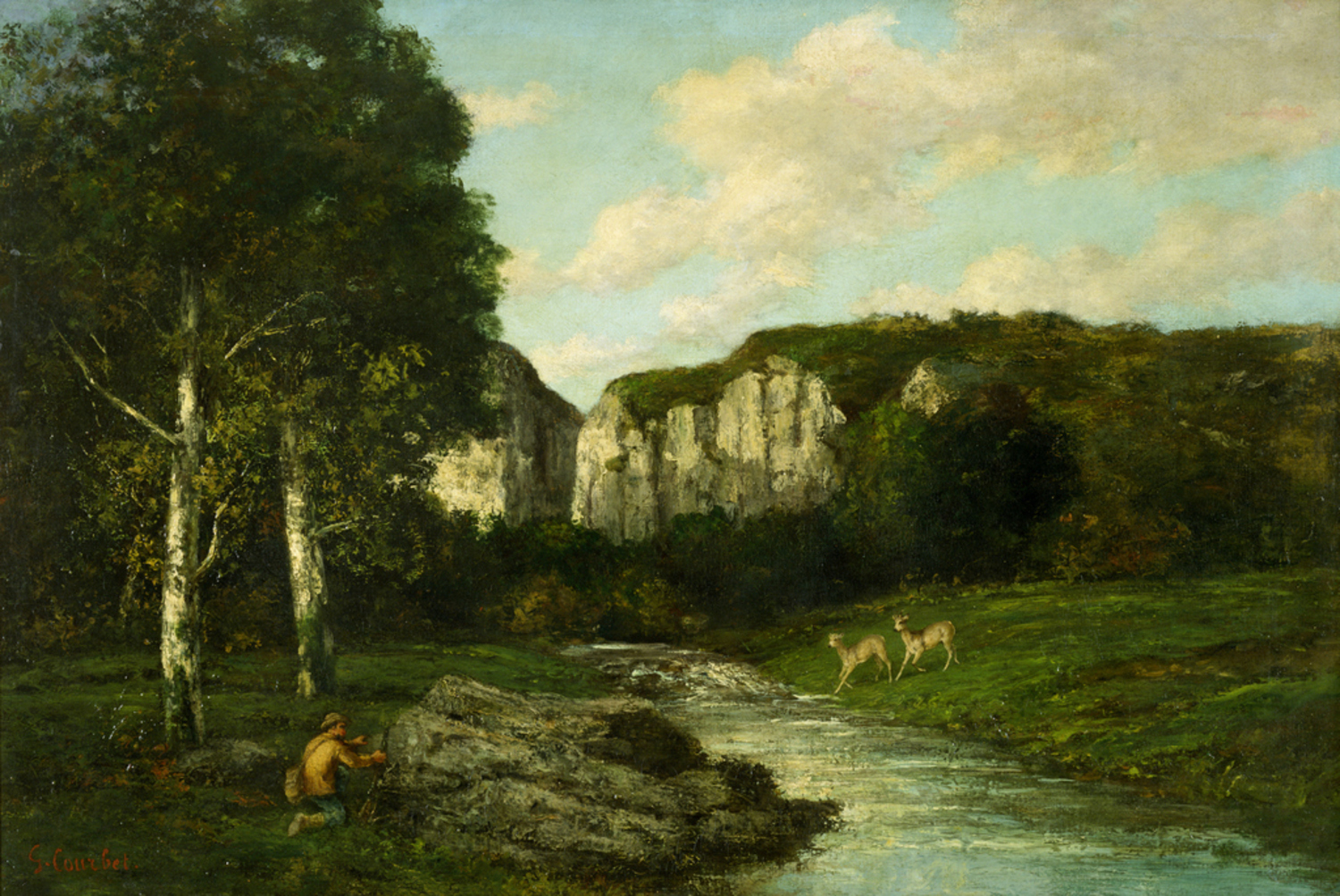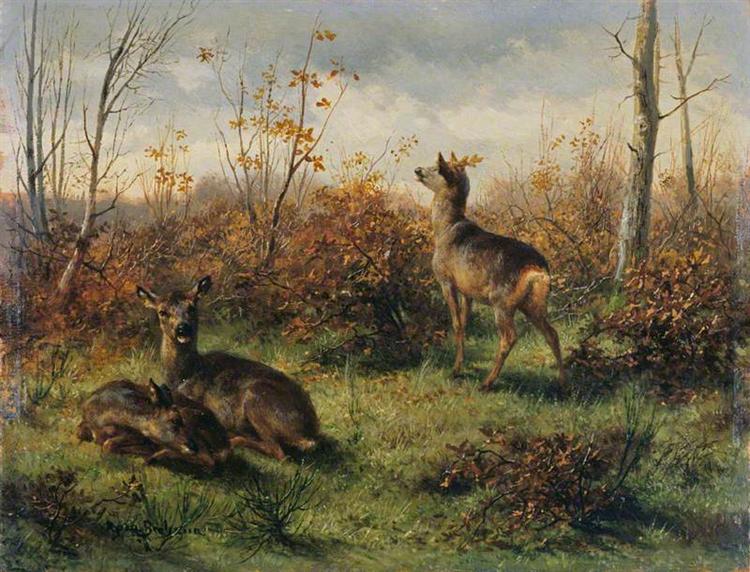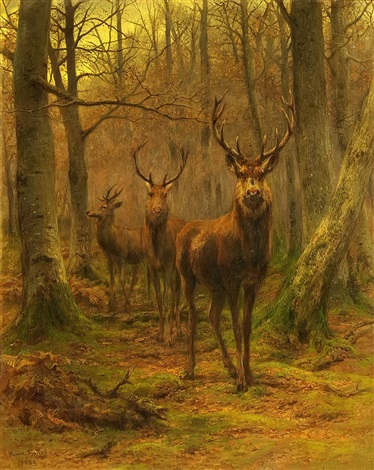Jean Honore Fragonard (1732-1806) was one of the most popular painters of the French Rococo. The court of Louis XV sought painting that depicted a fantasy world of pleasure. Wealthy private patrons commissioned large paintings that depicted lush formal gardens such as those at the Palace of Versailles, inhabited by beautiful, richly dressed people or gods and goddesses enjoying every earthly pleasure. Paintings were in pastel colors that evoked a world seen through rose-colored glasses. The stories ranged from the playful to the delightfully erotic.

“The Pursuit” (1770-72)
The Progress of Love was commissioned by the Comtesse du Barry (1743-1793), the last mistress of Louis XV, for the pavilion at her Chateau in Louveciennes. The first of four canvases is “The Pursuit” (1770-72) (10 feet x 7 feet). Three comely young ladies in light colored silk dresses are enjoying an afternoon in a lavish park. A handsome young man suddenly appears from behind the pillar supporting a profusion of roses and topped by a large urn with palm branches. With proper courtly grace, he sweeps off his hat and bows, offering the young woman a single pink rose, the symbol of first love. Raising her arms in a moment of surprise, she tries to run away. Her two companions awkwardly try to support her. A fountain at the top right corner of the painting sports two cupids sitting on a dolphin and watching the event. Their positions echo the awkward arrangement of the young woman’s two companions.

“The Meeting” (1770-1772)
The second canvas in The Progress of Love is “The Meeting.” The beautiful young girl, alone in another part of the garden, awaits her new lover for a secret meeting. She looks cautiously to her left to make sure no one is near as her lover climbs over the wall. They are surrounded by clusters of roses, the flowers of love, growing in gardens and pots. A large marble statue of Venus and Cupid stands above them. Venus’s pose suggests she is also on watch, making sure their meeting is not interrupted.

“The Meeting” (1770-1772)
All is well in the third scene. In another part of the garden, the two lovers have spent the afternoon together. The presence of a tambourine and sheet music suggests a musical interlude. The young woman has made a crown of roses, and she is about to place it on her lover’s head. No need for secrecy, their love is an open book. An artist has accompanied them to the garden and is busy making a drawing of the young couple. The pedestal behind them holds the sculpture of a sleeping cupid; his job has been well done.

“Love Letters” (1770-1772)
The final scene depicts the couple happily together. She sits on the base of a large stone column, and he stands comfortably next to her. For the first time they touch, his arms encircling her waist and his head resting on her shoulder. They read love letters. They have settled into a happy state of togetherness. Domesticity and marriage are suggested by the white and tan King Charles Spaniel lying comfortably at their feet. In the three previous canvases, foliage and flowers were set behind the figures. In scene four the figures are set in a sunny area between the trees.
The clothed statue of a goddess, possibly Hera, goddess of marriage and childbirth, looks down on the couple. In the same joyful position as in scene two, Cupid perhaps celebrates a child on the way.
Madame du Barry decided to return the paintings, in effect rejecting them, and ordered a set from Joseph Marie Vien (1716-1809). Her actions have puzzled art historians ever since. Vien painted in the newly popular style of Neoclassicism. Fragonard’s Rococo style was going out of favor. Did the figure in red climbing over the wall in the second scene look too much like Louis XV? The chateau at Louveciennes was Louis’s first gift to Madame du Barry. She was his sixth mistress following the very popular Madame de Pompadour, who recently had died in 1764. Du Barry came from humble origins, but she had become the trend setter for the French court. She was known to meddle notoriously in the details of every work she commissioned, and frequently changing her mind.
Whatever the reason, Fragonard’s The Progress of Love series was rejected. He was paid in full, but he took the paintings with him. Fragonard painted an additional two large paintings: “Love Triumphant” and “Reverie” and several smaller paintings of cupids. In 1792 Fragonard installed the paintings for the first time in his godfather’s Villa Maubert, in Grasse, France.

J. Pierpont Morgan purchased the paintings in Grasse and hung them in his London house. On his Morgan’s death in 1914, Henry Clay Frick purchased and installed them in a specially designed room in his home in New York City. “Love Pursuing a Dove,” hung over the door at the left of the room, and “Love the Avenger” were included in the installation. Two other Fragonard cupids from the group, “Love as Folly” and “Love the Sentinel,” are hung in the National Gallery in Washington, DC,
Fragonard’s paintings are filled with cupids and flowers, particularly roses. Roses are the flowers of love, but they also have thorns. After the death of Louis XV, du Barry was exiled from the court, and she retired to her chateau at Louveciennes with her companion the Duke of Brissac. She was caught in the grasp of the 1779 revolution and was sent to the guillotine for treason in 1793. Her last words were, “De grâce, monsieur le bourreau, encore un petit moment!” “One more moment, Mr. Executioner, I beg you!”
Note: The Frick Museum is currently being renovated, and the crown of the collection, The Progress of Love, will have a prominent place in the collection.
Beverly Hall Smith was a professor of art history for 40 years. Since retiring with her husband Kurt to Chestertown in 2014, she has taught art history classes at WC-ALL. She is also an artist whose work is sometimes in exhibitions at Chestertown RiverArts and she paints sets for the Garfield Center for the Arts.










